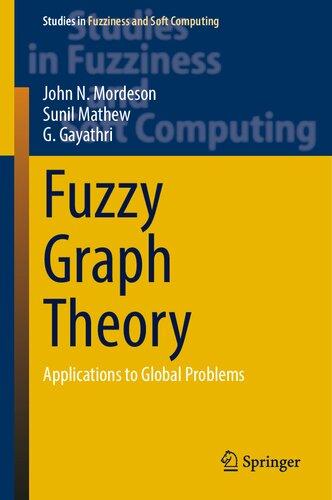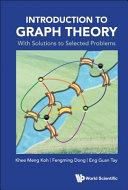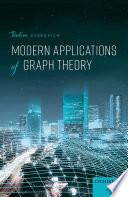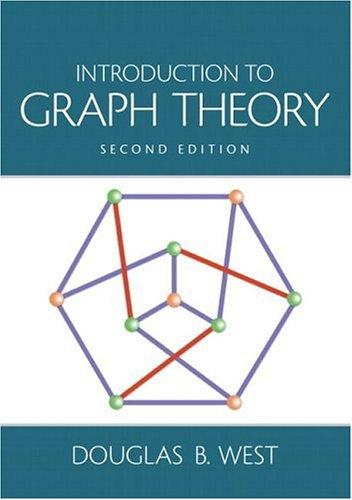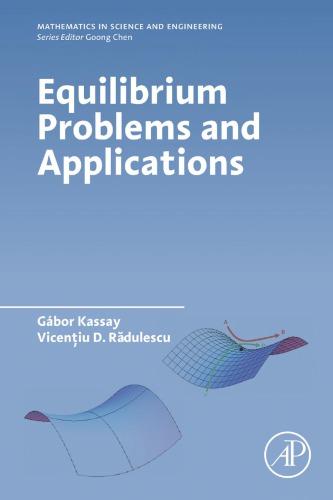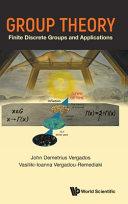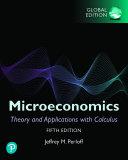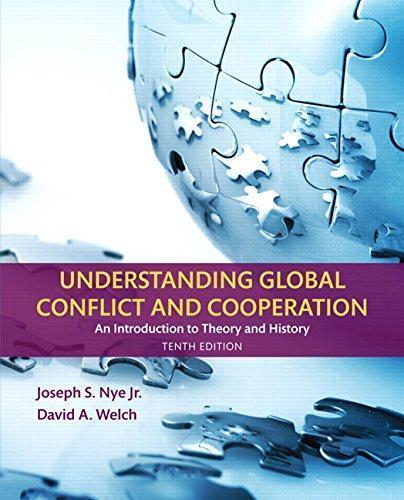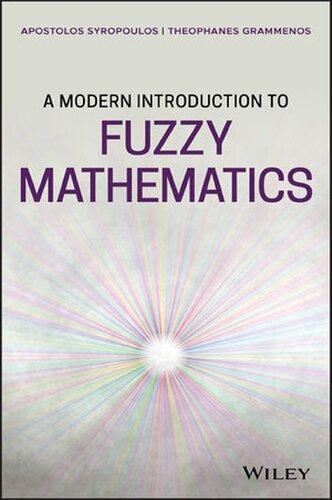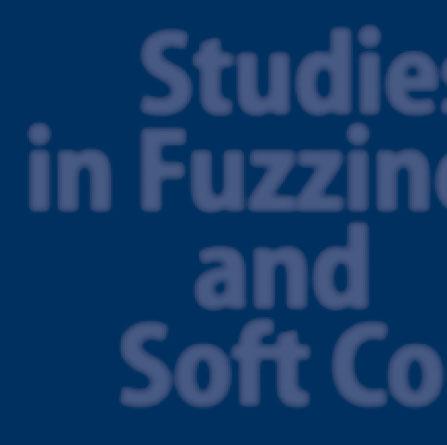Preliminaries
1.1FuzzySetsandRelations
Thissectioncoversthefundamentalsoffuzzysetsandfuzzyrelations.In1965, LotfyZadeh[1]introducedtheconceptoffuzzysetsusingfuzzylogictoaddress theproblemsofambiguityandvagueness.Fuzzysettheoryfacilitatestheinclusion ofelementsinasetwithpartialmembershipsrangingfrom0to1, whichisnot allowedinclassicalsettheory.Throughoutthisbook,weuse A c or X \ A todenote thecomplementofasubset A ofaset X . Wedenotethecardinalityof A by | A |. We denoteinfimumandsupremumby ∧ and ∨, respectively.Mostofthecontentsof thissectionaretakenfrom[2].
Definition1.1.1 Let X beaset.A fuzzysubset σ of X isafunction σ : X →[0, 1].
Intheliterature,differentnotationsforafuzzysetareused.Wefollowthenotation σ givenbyZadeh[1].Ifthereisnoconfusionabout X , thetermfuzzysubsetcanbe simplyreplacedbyfuzzyset.
Considerafuzzyset σ. Let σ ∗ denotethe support of σ, definedby { x ∈ X : σ( x )> 0}. Forany t ∈[0, 1], acrispsetcalledthe t -cut of σ canbedefinedas { x ∈ X : σ( x ) ≥ t }. If { x ∈ X : σ( x )> t }, thenitisa strong t -cut .Clearly,support ofafuzzysetisastrong0-cut.A1 cutisknownasthe core ofthefuzzyset.The height h (σ) and depth d (σ) of σ canbedefinedas h (σ) =∨{σ( x ) : x ∈ X } and d (σ) =∧{σ( x ) : x ∈ X }, respectively.If h (σ) = 1, thenthefuzzyset σ is normal and subnormal otherwise.
Example1.1.2 ConsiderFig. 1.1,whichshowsatrapezoidalfuzzyset σ definedon R Itsmembershipfunctionisdefinedby σ( x ) =
≤ a x a b a ifa ≤ x ≤ b 1ifb ≤ x ≤ c d x d c ifc ≤ x ≤ d 0otherwise.
©TheAuthor(s),underexclusivelicensetoSpringerNatureSwitzerlandAG2023 J.N.Mordesonetal., FuzzyGraphTheory,StudiesinFuzzinessandSoft Computing424, https://doi.org/10.1007/978-3-031-23108-7_1
Fig.1.1 Atrapezoidalfuzzy set
Notethat, σ isanormalfuzzysetwith σ ∗ = (a , d ). Next,wemoveontosomesettheoreticaloperationsonfuzzysets.If σ and μ are twofuzzysubsetsofaset X , then μ ⊆ ν ifforall x ∈ X ,μ( x ) ≤ ν( x ). If μ ⊆ ν andthereexists x ∈ X suchthat μ( x )<ν( x ), wewrite μ ⊂ ν. Wedefine μ ∩ ν as (μ ∩ ν)( x ) = μ( x ) ∧ ν( x ) forall x ∈ X .Wedefine μ ∪ ν as (μ ∪ ν)( x ) = μ( x ) ∨ ν( x ) forall x ∈ X .
Definition1.1.3 Afunction η :[0, 1]×[0, 1]→[0, 1] iscalleda t -norm ifitsatisfiesthefollowingconditions.
(1) η(1, x ) = x , ∀ x ∈[0, 1] (Identityelement).
(2) η( x , y ) = η( y , x ), ∀ x , y ∈[0, 1] (Commutativity).
(3) η( x ,η( y , z )) = η(η( x , y ), z ), ∀ x , y , z ∈[0, 1] (Associativity).
(4) w ≤ x and y ≤ z implies η(w, y ) ≤ η( x , z ), ∀w, x , y , z ∈[0, 1] (Monotonicity).
Thereareseveralclassesof t -normsdependingonthenatureofthefunction η. For example,acontinuous η iscalleda continuous t -norm.Astrictlymonotonicand continuous η iscalleda strict t -norm.
Example1.1.4 Thefollowingareexamplesof t -norms.
(1)Drastic t -norm: η( x , y ) = x ∧ y if x ∨ y = 1, 0otherwise.
(2)Lukasiewicz t -norm: η( x , y ) = 0 ∨ ( x + y 1).
(3) η( x , y ) = xy 2 ( x + y xy ) .
(4)Product t -norm: η( x , y ) = xy .
(5)Minimum t -norm: η( x , y ) = x ∧ y
The t -normdefinedin (5) isknownasthe standardintersection forfuzzysets. Also,amongall t -norms,drastic t -normisthesmallestandminimum t -normisthe largest.
1.1FuzzySetsandRelations3
Definition1.1.5 Afunction ζ :[0, 1]×[0, 1]→[0, 1] iscalleda t -conorm ifit satisfiesthefollowingconditions.
(1) ζ(0, x ) = x , ∀ x ∈[0, 1] (Identityelement).
(2) ζ( x , y ) = ζ( y , x ), ∀ x , y ∈[0, 1] (Commutativity).
(3) ζ( x ,ζ( y , z )) = ζ(ζ( x , y ), z ), ∀ x , y , z ∈[0, 1] (Associativity).
(4) w ≤ x and y ≤ z implies ζ(w, y ) ≤ ζ( x , z ), ∀w, x , y , z ∈[0, 1] (Monotonicity).
Example1.1.6 Thefollowingareexamplesof t -conorms.
(1)Standardunion: ζ( x , y ) = x ∨ y
(2)Algebraicsum: ζ( x , y ) = x + y xy
(3)Boundedsum: ζ( x , y ) = 1 ∧ ( x + y ).
(4)Drasticunion: ζ( x , y ) = ⎧ ⎨
x if y = 0, y if x = 0, 1otherwise.
Now,wedefinetheconceptofcomplementasfollows.
Definition1.1.7 Afunction c :[0, 1]→[0, 1] iscalleda fuzzycomplement ifthe followingconditionshold.
(1) c (0) = 1and c (1) = 0(Boundaryconditions).
(2) ∀ x , y ∈[0, 1], x ≤ y implies c ( x ) ≥ c ( y ) (Monotonicity).
Twodesirablepropertiesforafuzzycomplement c arecontinuityandbe involutive. Byinvolutivenature,wemean c (c ( x )) = x ∀ x ∈[0, 1]. Standardcomplementisan exampleofaninvolutivefuzzycomplement.Thatis, c ( x ) = 1 x forall x ∈[0, 1].
Nowrecallthatarelationonaset S isasubsetof S × S . Wecanextendthis conceptintofuzzyrelationonaset S asafuzzysubsetof S × S . Considerthe followingdefinitionoffuzzyrelationonafuzzyset.
Definition1.1.8 Let σ beafuzzysubsetofaset S and μ,afuzzyrelationon S . μ iscalleda fuzzyrelation on σ if μ( x , y ) ≤ σ( x ) ∧ σ( y ) forevery x , y ∈ S .
Definition1.1.9 If S and T aretwosetsand σ and τ arefuzzysubsetsof S and T , respectively,thenafuzzyrelation μ fromthefuzzysubset σ intothefuzzysubset τ isafuzzysubset μ of S × T suchthat μ( x , y ) ≤ σ( x ) ∧ τ( y ) forevery x ∈ S and y ∈ T
Definition1.1.10 Let μ : S × T →[0, 1] beafuzzyrelationfromafuzzysubset σ of S intoafuzzysubset τ of T and ν : T × U →[0, 1] beafuzzyrelationfrom thefuzzysubset ρ of T intoafuzzysubset η of U .Define μ ◦ ν : S × U →[0, 1] by μ ◦ ν( x , z ) =∨{μ( x , y ) ∧ ν( y , z ) : y ∈ T } forevery x ∈ S , z ∈ U . Then μ ◦ ν iscalledthe max-mincomposition of μ and ν .
Notethat,whenever μ and ν aretwofuzzyrelationsonafuzzyset σ, then μ ◦ ν isalsoafuzzyrelationon σ. Clearly,themax-mincomposition μ ◦ μ isafuzzy relationon σ .Itisdenotedas μ2 .Foranytwofuzzyrelations μ and ν onafiniteset S andany t ∈[0, 1],(μ ◦ ν)t = μt ◦ ν t
Definition1.1.11 If μ isafuzzyrelationdefinedonafuzzysubset σ ofaset S ,then the complement μc of μ isdefinedas μc ( x , y ) = 1 μ( x , y ) forevery x , y ∈ S .
Definition1.1.12 Let μ : S × T →[0, 1] beafuzzyrelationfromafuzzysubset σ of S intoafuzzysubset ν of T .Then μ 1 : T × S →[0, 1],the inverse of μ from ν into σ isdefinedas μ 1 ( y , x ) = μ( x , y ) forall x , y ∈ T × S . If μ isafuzzyrelationonafuzzyset σ ,definedover S ,then μ issaidtobe reflexive if μ( x , x ) = σ( x ) forevery x ∈ S . μ issaidtobe symmetric if μ( x , y ) = μ( y , x ) forevery x , y ∈ S and transitive if μ2 ⊆ μ.Afuzzyrelation μ onafuzzysubset σ ofaset S issaidtobea fuzzyequivalencerelation ifitisreflexive,symmetricand transitive.
1.2FuzzyGraphs
Fuzzygraphsaremathematicalstructuresthathelptoovercometheinadequacy ofgraphstoportraymanyreal-worldproblems.Kaufmann[3]proposedthebasic definitionofafuzzygraphin1973usingfuzzyrelationsonfuzzysets.Rosenfeld [4]furtherdevelopeditbydefiningseveralfuzzygraphparameters.Severalauthors madesignificantcontributionstothetheoreticaldevelopmentoffuzzygraphtheory. Mostofthebasicresultsonfuzzygraphsareincludedfrom[2].Becauseofthewide rangeofapplicationsinscienceandtechnology,fuzzygraphtheoryhasbecomea dominantareaofresearchinmathematics.
Foraset V , considerasubset E ofitspowersetsuchthateverysetin E has exactlytwoelements.Simplywewrite z w for { z ,w }∈ E . Clearly z w = w z .
Definition1.2.1 A fuzzygraph G = ( V ,σ,μ) isatripleconsistingofaset V ,a fuzzyset σ on V andafuzzyset μ on E suchthat μ( z w) ≤ σ( z ) ∧ σ(w) forevery z ,w ∈ V
Fromtheabovedefinition,itisclearthat μ isafuzzyrelationon V . Unless otherwisementioned,weassume V isfinite,and μ isreflexiveandsymmetric.
Welet G ∗ = (σ ∗ ,μ∗ ) todenotetheunderlyinggraphof G where σ ∗ ={ z ∈ V : σ( z )> 0} and μ∗ ={ z w ∈ E : μ( z w)> 0}. Afuzzygraph G = ( V ,σ,μ) is trivial when G ∗ istrivial.Themembersof σ ∗ areknownasthe vertices andthemembers of μ∗ areknownasthe edges ofthefuzzygraph.Iftheset V iswelldefined,weuse theabbreviations G or (σ,μ) or G = (σ,μ) todenoteafuzzygraph.
Definition1.2.2 Afuzzygraph H = ( V ,τ,ν) iscalleda partialfuzzysubgraph of G = ( V ,σ,μ) if τ(u ) ≤ σ(u ) foreveryvertex u ∈ σ ∗ and ν(u v) ≤ μ(u v) forevery u v ∈ μ∗ .Inparticular,wecall H = ( V ,τ,ν), a fuzzysubgraph of G = ( V ,σ,μ) if τ(u ) = σ(u ) forevery u ∈ τ ∗ and ν(u v) = μ(u v) forevery u v ∈ ν ∗ .Afuzzy subgraph H = ( V ,τ,ν) issaidto span thefuzzygraph G = ( V ,σ,μ) if τ = σ . Thefuzzygraph H = ( V ,τ,ν) iscalleda fuzzysubgraphof G inducedby P if P ⊂ σ ∗ ,τ(u ) = σ(u ) forall u in P and ν(u v) = μ(u v) forevery u ,v ∈ P .
Fig.1.2a Fuzzygraph G in Example 1.2.5 b Partial fuzzysubgraph G 1 and fuzzysubgraph G 2 of G
Forafuzzygraph G , andevery t ∈[0, 1], wecandefineanassociatedgraph, calledthethresholdgraphof G correspondingto t .
Definition1.2.3 Let G = (σ,μ) beafuzzygraphandlet0 ≤ t ≤ 1.Let σ t ={ x ∈
σ ∗ : σ( x ) ≥ t } and μt ={e ∈ μ∗ : μ(e ) ≥ t }.Then H = (σ t ,μt ) isagraphwith vertexset σ t andedgeset μt ,calledthethresholdgraphof G correspondingto t .
Proposition1.2.4 Let G = (σ,μ) beafuzzygraphand0 ≤ s < t ≤ 1.Thenthe thresholdgraph (σ t ,μt ) isasubgraphof (σ s ,μs ).
Example1.2.5 LetFig. 1.2(a)illustratesafuzzygraph G = (σ,μ) with σ ∗ = { x , y , z ,w } and μ∗ ={ xy , yz , z w, y w }.Apartialfuzzysubgraph G 1 andafuzzy subgraph G 2 of G aregiveninFig. 1.2b.Thefuzzysubgraphinducedbythesubset P ={ y , z ,w } of σ ∗ andthethresholdgraphof G correspondingto t = 0.7aregiven inFig. 1.3.
Consider G 1 giveninFig. 1.2b.Itisapartialfuzzysubgraphof G , because τ( z ) = σ( z ) and τ(a )<σ(a ) forallothervertices a ∈ σ ∗ . Also, ν(e )<μ(e ) foralledges e ∈ μ∗ . Ifweconsider G 2 , thenitisafuzzysubgraphof G . Because,forevery vertex a ∈ τ ∗ ,τ(a ) = σ(a ) andforeveryedgein ν ∗ ,ν(e ) = μ(e ). Here, G 2 isalso apartialfuzzysubgraphof G But, G 1 isnotafuzzysubgraphof G Moreover,both G 1 and G 2 span G as τ ∗ = σ ∗
Let P ={ y , z ,w } Then G 3 ofFig. 1.3 isthefuzzysubgraphinducedby P For G 4 giveninFig. 1.3, σ 0 7 ={ x , y , z ,w } and μ0 7 ={w z } Here, G 4 = (σ 0 7 ,μ0 7 ) is thethresholdgraphof G correspondingto t = 0 7
Welet G e todenotethe edgedeletedfuzzygraph of G = (σ,μ) obtained bydeletinganedge e ∈ μ∗ from G Itisdefinedbythefuzzysubgraph H = (τ,ν)
(z, 0.8) (w, 0.7)0.7 0 6
5
(y, 0 7)
Fig.1.3 Aninducedfuzzygraph G 3 andathresholdgraph G 4 of G with τ( z ) = σ( z ) forevery z ∈ σ ∗ ,ν(e ) = 0, and ν(e ) = μ(e ) forallotheredges e ∈ μ∗ . Similarly,foravertex v ∈ σ ∗ , welet G v todenotethe vertexdeleted subgraph of G definedby H = (τ,ν) with τ(v) = 0,τ( z ) = σ( z ) forallother verticesin σ ∗ , ν(v z ) = 0forevery z ∈ σ ∗ and ν(e ) = μ(e ) forallotheredges e ∈ μ∗ .
Asequenceofdistinctvertices P : z 0 , z 1 , ··· , z n with μ( z i 1 z i )> 0, i = 1, 2, ··· , n iscalleda path P oflength n . Thedegreeofmembershipofaweakestedge in P isdefinedasitsstrength.Thepath P becomesa cycle if z 0 coincideswith z n .
Definition1.2.6 The strengthofconnectedness betweentwovertices z and w ofa fuzzygraph G isdefinedasthemaximumofthestrengthsofallpathsbetween z and w andisdenotedby CONN G ( z ,w). Itisalsodenotedas μ∞ ( z ,w).A z w path P iscalleda strongest z w pathifitsstrengthequals CONN G ( z ,w). Afuzzygraph G = (σ,μ) issaidtobe connected ifforevery z ,w ∈ σ ∗ , CONN G ( z ,w)> 0.
Forexample,therearetwopathsconnecting y and w inthefuzzygraphgiven inExample 1.2.5 (Fig. 1.2a).Thepath yz w andtheedge y w are y w pathswhere yz w istheuniquestrongest y w path.So, CONN G ( y ,w) = 0.6.
Wecanreferthestrengthofconnectednessbetweentwovertices z and w of agraphnetworkasthemaximumbandwidthbetweenthevertices z and w orthe maximumwidthbetweenthevertices z and w. Ithasseveralapplicationsininternet routingproblems,QoSproblemsandseveralotherareas.
Proposition1.2.7 Let G = (σ,μ) beaconnectedfuzzygraphand H = (τ,ν) be apartialfuzzysubgraphof G .Then CONN H ( x , y ) ≤ CONN G ( x , y ) forevery x , y ∈ σ ∗ .
Acycle C issaidtobea fuzzycycle if C hasmorethanoneweakestedge.A cycle C inafuzzygraph G iscalled locamin ifeveryvertexof C isadjacentwith aweakestedgeofthefuzzygraph G . C iscalled multimin ifithasmorethanone weakestedge.
Notethat,everylocamincycleisamultimin.But,theconverseneednotbetrue.
Example1.2.8 Considerthefuzzygraphs G 5 and G 6 giveninFig. 1.4.Clearly, G 5 isafuzzycycleasithas2weakestedges.Itisalsoamultimin.But G 5 isnota locamin.Thefuzzygraph G 6 islocaminaseveryvertexliesonaweakestedge.
Fig.1.4 Afuzzycycle G 5 andalocamincycle G 6
Fig.1.5 Afuzzygraph havingfuzzycutverticesand fuzzybridges
Definition1.2.9 Let G = (σ,μ) beafuzzygraph.Anedge xy iscalleda fuzzy bridge of G ifitsremovalreducesthestrengthofconnectednessbetweensomepair ofverticesin G .Thatis, CONN G e (u ,v)< CONN G (u ,v) forsome u ,v ∈ σ ∗ Similarlya fuzzycutvertex w isavertexin σ ∗ whoseremovalfrom G reducesthe strengthofconnectednessbetweensomepairofdistinctverticesdifferentfrom w Thatis, CONN G w (u ,v)< CONN G (u ,v) where u ,v ∈ σ ∗ suchthat u = w = v Afuzzygraphissaidtobea fuzzyblock orsimplya block ifithasnofuzzy cutvertices.
Example1.2.10 Considerthefuzzygraph G = (σ,μ) inFig. 1.5.Let σ ∗ ={ x , y , z , w, m , n } and σ(a ) = 1forevery a ∈ σ ∗
InthecaseofFig. 1.5,theencircledvertex m isafuzzycutvertex. CONN G (w, n ) = 0 7,whereas CONN G m (w, n ) = 0 3 Moreover, n and w arealsofuzzycutverticesof G Also,alltheedgesexcept xy and yz arefuzzybridgesof G Ingraphs,atleastoneoftheendverticesofabridgewillbeacutvertex.Butthis isnottrueforfuzzybridgesandfuzzycutvertices.Nextisausefulcharacterization forfuzzybridgesofafuzzygraph.
Theorem1.2.11 [4]Let G = (σ,μ) beafuzzygraph.Thenthefollowingstatements areequivalent.
(1) xy isafuzzybridge.
(2) CONN G xy ( x , y )<μ( xy ).
(3) xy isnottheweakestedgeofanycycle.
A maximumspanningtree ofaconnectedfuzzygraph G = (σ,μ) isaspanning fuzzysubgraph T = (σ,ν) of G ,whichisatreesuchthat CONN G (u ,v) isthe strengthoftheuniquestrongest u v pathin T forall u ,v ∈ G . Nextwehave characterizationsforfuzzycutverticesandfuzzybridgesusingmaximumspanning treesoffuzzygraphs.
Theorem1.2.12 [2]Avertex w ofafuzzygraph G = (σ,μ) isafuzzycutvertex ifandonlyif w isaninternalvertexofeverymaximumspanningtreeof G .
Theorem1.2.13 [2]Anedge u v ofafuzzygraph G = (σ,μ) isafuzzybridgeif andonlyif u v isineverymaximumspanningtreeof G .
Theorem1.2.14 [5]If w isacommonvertexofatleasttwofuzzybridges,then w isafuzzycutvertex.
Theorem1.2.15 [5]If u v isafuzzybridge,then CONN G (u ,v) = μ(u v).
Definition1.2.16 Anedge xy ofafuzzygraph G iscalled strong ifitsweightis atleastasgreatastheconnectednessofitsendverticesintheedgedeletedfuzzy subgraph G xy .If xy isastrongedge,then x and y aresaidtobe strongneighbors Avertex z iscalleda fuzzyendvertex ifithasexactlyonestrongneighborin G .An x y path P iscalleda strongpath if P containsonlystrongedges.
The degree ofavertex v isdefinedas d (v) = u =v μ(u v).The minimum degree of G is δ( G ) =∧{d (v) : v ∈ σ ∗ } andthe maximumdegree of G is ( G ) = ∨{d (v) : v ∈ σ ∗ }.The strongdegree ofavertex v ∈ σ ∗ isdefinedasthesumof membershipvaluesofallstrongedgesincidentat v .Itisdenotedby ds (v).Alsoif N s (v) denotesthesetofallstrongneighborsof v ,then ds (v) = u ∈ Ns (v) μ(u v). The minimumstrongdegree of G is δs ( G ) =∧{ds (v) : v ∈ σ ∗ } and maximum strongdegree of G is s ( G ) =∨{ds (v) : v ∈ σ ∗ }.
Definition1.2.17 Aconnectedfuzzygraph G = (σ,μ) isa fuzzytree ifithasa fuzzyspanningsubgraph F = (σ,ν),whichisatree,whereforalledges xy notin F thereexistsapathfrom x to y in F whosestrengthismorethan μ( xy )
Notethat F istheuniquemaximumspanningtreeof G .Also,if G isnotconnected, andsatisfiesthepropertyofDefinition 1.2.17,thenitiscalleda fuzzyforest
Forexample,thefuzzygraph G giveninFig. 1.2aisafuzzytree.
Definition1.2.18 Aconnectedfuzzygraph G = (σ,μ) isa completefuzzygraph if μ( xy ) = σ( x ) ∧ σ( y ) forevery x and y in σ ∗ .
Definition1.2.19 Fig. 1.6 isacompletefuzzygraph G = (σ,μ) with | σ ∗ |= 4
Define σ( x ) = 0 4,σ( y ) = 0 5,σ( z ) = 0 6, and σ(w) = 0 9.Forevery a , b ∈ σ ∗ , wecanseethat μ(ab ) = σ(a ) ∧ σ(b ).
Theorem1.2.20 [6]If G = (σ,μ) isacompletefuzzygraph,thenforanyedge u v ∈ μ∗ , CONN G (u ,v) = μ(u v)
Fig.1.6 Acompletefuzzy graph
x, 0.4)(y, 0.5)
Proposition1.2.21 [4]If G = (σ,μ) isafuzzytree,thentheedgesofitsmaximum spanningtree F = (τ,ν) arejustthefuzzybridgesof G .
Theorem1.2.22 [7]Let G = (σ,μ) beafuzzygraphsuchthat G ∗ isacycle.Then G isafuzzycycleifandonlyif G isnotafuzzytree.
Theorem1.2.23 [5]Let G = (σ,μ) beaconnectedfuzzygraphwithnofuzzy cycles.Then G isafuzzytree.
Theorem1.2.24 [5]If G isafuzzytree,thentheinternalverticesof F arefuzzy cutverticesof G .
Theorem1.2.25 [5]Let G = (σ,μ) beafuzzygraph.Then G isafuzzytreeifand onlyifthefollowingconditionsareequivalentforall u ,v ∈ V . (1) u v isafuzzybridge. (2) CONN G (u ,v) = μ(u v).
Theorem1.2.26 [5]Afuzzygraphisafuzzytreeifandonlyifithasaunique maximumspanningtree.
Basedonthestrengthofconnectednessbetweentheendverticesofanedge,edges offuzzygraphscanbedividedintothreecategoriesasgivenbelow.
Definition1.2.27 [8]Anedge xy inafuzzygraph G = (σ,μ) iscalled α -strong if μ( xy )> CONN G xy ( x , y ),β -strong if μ( xy ) = CONN G xy ( x , y ) and δ -edge if μ( xy )< CONN G xy ( x , y ).
The δ -edgesofafuzzygraph G ,whose μ valuesaremorethanthatoftheweakest edgeof G arecalled δ ∗ -edges.Apathinafuzzygraphiscalledan α -strongpath ifallitsedgesare α -strongandissaidtobea β -strongpath ifallitsedgesare β -strong.
G issaidtobe α -saturated,ifatleastone α -strongedgeisincidentatevery vertex v ∈ σ ∗ G iscalled β -saturated,ifatleastone β -strongedgeisincidentat everyvertex. G iscalled saturated,ifitisboth α -saturatedand β -saturated.Thatis, atleastone α -strongedgeandone β -strongedgeisincidentoneveryvertex v ∈ σ ∗ . Alsoafuzzygraphwhichisnotsaturatediscalled unsaturated.
Fig.1.7 Fuzzygraphwith edgeclassification
Example1.2.28 ThefuzzygraphgiveninFig. 1.7 containsallthreetypeofedges including δ ∗ -edges.
Theorem1.2.29 [8]Let G = (σ,μ) beafuzzygraph.Thenanedge xy of G isa fuzzybridgeifandonlyifitis α -strong.
Theorem1.2.30 [8]Aconnectedfuzzygraph G isafuzzytreeifandonlyifithas no β -strongedges.
Theorem1.2.31 [8]Anedge xy ofafuzzytree G = (σ,μ) is α -strongifandonly if xy isanedgeofthemaximumspanningtree F = (σ,ν) of G .
Theorem1.2.32 [8]Acompletefuzzygraphhasno δ -edges.
Definition1.2.33 Let G = (σ,μ) beaconnectedfuzzygraph.Asetofvertices X ={v1 ,v2 , ··· ,vm }⊂ σ ∗ issaidtobea fuzzyvertexcut or fuzzynodecut (FNC) of G ifeither, CONN G X ( x , y )< CONN G ( x , y ) forsomepairofvertices x , y ∈ σ ∗ suchthatboth x , y = vi for i = 1, 2, ··· , m or G X istrivial. Let X beafuzzyvertexcutof G .The strongweight of X ,denotedby s ( X ) is definedas s ( X ) = x ∈ X μ( xy ),where μ( xy ) istheminimumoftheweightsof strongedgesincidentat x .
Definition1.2.34 The fuzzyvertexconnectivity ofaconnectedfuzzygraph G is definedastheminimumstrongweightoffuzzyvertexcutsof G .Itisdenotedby κ( G )
Definition1.2.35 Let G = (σ,μ) beafuzzygraph.Asetofstrongedges E = {e1 , e2 , , en } where ei = u i vi , i = 1, 2, , n issaidtobea fuzzyedgecut or fuzzyarccut(FAC) of G ifeither CONN G E ( x , y )< CONN G ( x , y ) forsome pairofvertices x , y ∈ σ ∗ withatleastoneof x or y differentfromboth u i and vi , i = 1, 2, , n , or G E isdisconnected. Ifthereare n edgesin E ,thenitiscalledan n -FAC.Amongallfuzzyedgecuts, anedgecutwithoneedge(1-FAC)isaspecialtypeoffuzzybridge,calleda fuzzy bond.Atleastoneoftheendverticesofafuzzybondisalwaysafuzzycutvertex. Thestrongweightofafuzzyedgecut E isdefinedas s ( E ) = ei ∈ E μ(ei )
Definition1.2.36 The fuzzyedgeconnectivity κ ( G ) ofaconnectedfuzzygraph G isdefinedtobetheminimumstrongweightoffuzzyedgecutsof G .
Theorem1.2.37 [9]Inafuzzytree G = (σ,μ), κ( G ) = κ ( G ) =∧{μ( xy ) : xy is astrongedgein G }.
Theorem1.2.38 [9]Inaconnectedfuzzygraph G = (σ,μ), κ( G ) ≤ κ ( G ) ≤ δs ( G ).
InaCFG, G = (σ,μ), κ( G ) = κ ( G ) = δs ( G ).
Definition1.2.39 Let u and v beanytwoverticesofafuzzygraph G = (σ,μ) such thattheedge u v isnotstrong.Asubset S ⊆ σ ∗ ofverticesissaidtobea u v strengthreducingsetofvertices if CONN G S (u ,v)< CONN G (u ,v),where G S isthefuzzysubgraphof G obtainedbyremovingallverticesin S . Similarly,asetofedges E ⊆ μ∗ issaidtobea u v strengthreducingsetof edges if CONN G E (u ,v)< CONN G (u ,v) where G E isthefuzzysubgraph of G obtainedbyremovingalledgesin E .
Theorem1.2.40 [10]Let G = (σ,μ) beafuzzycyclewith |σ ∗ |≥ 3 Ifnotwo α -strongedgesof G areadjacent,then κ( G ) = 2μ( xy ), where xy isaweakestedge of G , otherwise κ( G ) = μ(u v), if μ(u v)< 2μ( xy ), else κ( G ) = 2μ( xy ), where xy isaweakestedgeof G and u v isanedgewithminimum μ valueamongall α -strongedgesadjacentwithoneanother.
Theorem1.2.41 [10]Let G = (σ,μ) beafuzzygraphwith |σ ∗ |= n If H = (σ,ν) isapartialfuzzysubgraphof G , then κ( H ) ≤ κ( G ).
Theorem1.2.42 [11]Let G = (σ,μ) beafuzzygraphwith |σ ∗ |= n . If H = (σ,ν) isapartialfuzzysubgraphof G havingthesamevertexsetof G , then κ ( H ) ≤ κ ( G ).
Theorem1.2.43 [12] (GeneralizationofthevertexversionofMenger’sTheorem) Let G = (σ,μ) beafuzzygraph.Foranytwovertices u ,v ∈ σ ∗ suchthat u v isnotstrong,themaximumnumberofinternallydisjointstrongest u v pathsin G isequaltothenumberofverticesinaminimal u v strengthreducingset.
Definition1.2.44 Let G beaconnectedfuzzygraphand t ∈ (0, ∞). G iscalled t -connected if κ( G ) ≥ t and G iscalled t -edgeconnectedif κ ( G ) ≥ t .
Theorem1.2.45 [12]Let G beaconnectedfuzzygraph.Then G is t -connectedif andonlyif mCONN G (u ,v) ≥ t foreverypairofvertices u and v in G ,where m is thenumberofinternallydisjointstrongest u v pathsin G .
Theorem1.2.46 [12]Let G beaconnectedfuzzygraph.Then G is t -edgeconnected ifandonlyif mCONN G (u ,v) ≥ t foreverypairofvertices u and v in G ,where m isthenumberofedgedisjointstrongest u v pathsin G
In2013,MathewandSunithaintroducedanewconnectivityparametercalled cycleconnectivity,whichisgiveninDefinition 1.2.48.UptoDefinitions 1.2.53 are from[13].
Fig.1.8 Illustrationofcycle connectivity
(x, 0.6) (y, 0.5) (z, 0.4) (w, 0.3)
Definition1.2.47 Let G = (σ,μ) beafuzzygraph.Thenforanytwovertices u and v of G ,thereassociatedaset θ(u ,v) calledthe θ -evaluation of u and v definedas θ(u ,v) ={α : α ∈ (0, 1],where α isthestrengthofastrongcyclepassingthrough both u and v }.
Notethatiftherearenostrongcyclespassingboth u and v ,then θ(u ,v) = φ .
Definition1.2.48 Let G = (σ,μ) beafuzzygraph.Then, ∨{α |α ∈ θ(u ,v); u ,v ∈ σ ∗ },isdefinedasthe cycleconnectivity between u and v in G anddenotedby C G u ,v .If θ(u ,v) = φ forsomepairofvertices u and v ,definethecycleconnectivitybetween u and v tobe0.
Example1.2.49 Considerthefuzzygraph G = (σ,μ) giveninFig. 1.8 withweights definedasinthefigure.Here G isacompletefuzzygraph. θ { x , z }={0.4, 0.3} and hence C G x , z = 0.4.
Definition1.2.50 Let G = (σ,μ) beafuzzygraph. Cycleconnectivity of G is definedas CC ( G ) = Max {C G u ,v : u ,v ∈ σ ∗ }.
Definition1.2.51 Anode w inafuzzygraphiscalleda cycliccutvertex if CC ( G w)< CC ( G ).
Definition1.2.52 Anedge u v ofafuzzygraphiscalleda cyclicbridge if CC ( G (u ,v))< CC ( G ).
Proposition1.2.53 Inafuzzygraph,ifedge u v isacyclicbridge,then u and v are cycliccutvertices.
Definition1.2.54 [14]A cyclicvertexcut (CVC)ofafuzzygraph G = (σ,μ) isa setofvertices X ⊆ σ ∗ suchthat CC ( G X )< CC ( G ), provided CC ( G )> 0
Definition1.2.55 [14]Let X beacyclicvertexcutof G Thestrongweightof X is definedas Sc ( X ) = x ∈ X μ( xy ), where μ( xy ) istheminimumweightsofstrong edgesincidenton x
Definition1.2.56 [14] Cyclicvertexconnectivity ofafuzzygraph G , denotedby κc ( G ), istheminimumofthecyclicstrongweightsofcyclicvertexcutsin G
Theorem1.2.57 [2]Acycle C inafuzzygraph G iscalleda strongeststrongcycle (SSC) if C istheunionoftwostrongeststrong u v pathsforeverypairofvertices u and v in C exceptwhen u v isafuzzybridgeof G in C .
Theorem1.2.58 [2]Let G = (σ,μ) beafuzzycycle.Thenthefollowingareequivalent.
(1) G iseithersaturatedor β -saturated.
(2) G isablock.
(3) G isastrongeststrongcycle ( SSC ).
(4) G isalocamincycle.
Theorem1.2.59 [15]Thefollowingstatementsareequivalentforafuzzygraph G = (σ,μ).
(1) G isablock.
(2)Anytwovertices u and v suchthat u v isnotafuzzybridgearejoinedbytwo internallydisjointstrongestpaths.
(3)Foreverythreedistinctverticesof G , thereisastrongestpathjoininganytwo ofthemnotcontainingthethird.
Theorem1.2.60 [15]If G = (σ,μ) isablock,thenthefollowingconditionshold andareequivalent.
(1)Everytwoverticesof G lieonacommonstrongcycle.
(2)Eachvertexandastrongedgeof G lieonacommonstrongcycle.
(3)Anytwostrongedgesof G lieonacommonstrongcycle.
(4)Foranytwogivenverticesandastrongedgein G , thereexistsastrongpath joiningtheverticescontainingtheedge.
(5)Foreverythreedistinctverticesof G , thereexistsastrongpathjoininganytwo ofthemcontainingthethird.
(6)Foreverythreeverticesof G , thereexiststrongpathsjoininganytwoofthem whichdoesnotcontainthethird.
Theorem1.2.61 [2]Let C n beafuzzycycle.Thenitissaturatedifandonlyifthe followingtwoconditionsaresatisfied.
(1) n = 2k , where k isaninteger.
(2) α -strongand β -strongedgesappearalternativelyon C n .
Definition1.2.62 [2]An isomorphism h : G → G isamap h : S → S whichis bijectivethatsatisfies ψ(m ) = ψ (h (m )) forall m ∈ S ,γ(m , p ) = γ (h (m ), h ( p )) forall m , p ∈ S .
Definition1.2.63 [2]The complement ofafuzzygraph G = (ψ,γ) isthefuzzy graph G c = (ψ c ,γ c ) where ψ c = ψ and γ c (m , p ) = ψ(m ) ∧ ψ( p ) γ(m , p ) for all m , p ∈ V
141Preliminaries
Definition1.2.64 [16]Let G 1 = (σ1 ,μ1 ) and G 2 = (σ2 ,μ2 ) betwofuzzygraphs with G ∗ 1 = ( V1 , E 1 ) and G ∗ 2 = ( V2 , E 2 ) with V1 ∩ V2 = φ andlet G ∗ = G ∗ 1 ∪ G ∗ 2 = ( V1 ∪ V2 , E 1 ∪ E 2 ) betheunionof G ∗ 1 and G ∗ 2 . Thenthe union oftwofuzzygraphs G 1 and G 2 isafuzzygraph G = G 1 ∪ G 2 = (σ1 ∪ σ2 ,μ1 ∪ μ2 ) definedby (σ1 ∪ σ2 )(
and (μ
Definition1.2.65 [16]Considerthejoin G ∗ = G ∗ 1 + G ∗ 2 = ( V1 ∪ V2 , E 1 ∪ E 2 ∪ E ) ofgraphswhere E isthesetofaledgesjoiningtheverticesof V1 and V2 whereweassumethat V1 ∩ V2 = φ. Thenthe join oftwofuzzygraphs G 1 and G 2 isafuzzygraph G = G 1 + G 2 = (σ1 + σ2 ,μ1 + μ2 ) definedby (σ1 + σ2 )(u ) = (σ1 ∪ σ2 )(u ), u ∈ V1 ∪ V2 and (μ1 + μ2 )(u v) = (μ1 ∪ μ2 )(u v) if u v ∈ E 1 ∪ E 2
Definition1.2.66 [16]Let G ∗ = G ∗ 1 × G ∗ 2 = ( V , E ) betheCartesianproductof twographswhere V = V1 × V2 and E ={
V
, u
v
E 2 }∪ {(u 1 ,w)(v1 ,w) : w ∈ V2 ,
= (σ1 × σ2 ,μ1 × μ2 ) isafuzzygraphdefinedby (σ1 × σ2 )(u 1
× μ2 ((u , u 2 )(u ,v2 )) =
E 2 , μ1 × μ2 ((u 1 ,w)(v1 ,w)) = σ2 (w) ∧ μ1 (u 1 v1 ) ∀ w ∈ V2 , ∀ u 1 v1 ∈ E 1 .
Definition1.2.67 [16]Let G ∗ = G ∗ 1 ◦ G
2 = ( V1 × V2 , E ) bethecompositionof twographs,where E ={
}∪{(u 1 ,w)(v1 ,w) : w ∈ V2 , u 1 v1 ∈ E 1 }∪{
} Thenthe composition offuzzygraphs G = G
isafuzzygraphdefined by
Definition1.2.68 [17]Forafuzzygraph G = (ψ,γ), the connectivityIndex (CI ) isdefinedas CI ( G ) = ∗ m , p
ψ(m )ψ( p )CONN G (m , p ), where CONN G (m , p ) isthestrengthofconnectednessbetween m and p
Definition1.2.69 [23]Forafuzzygraph G = (ψ,γ), the WienerIndex ( WI ) is definedas WI ( G ) = m , p
ψ(m )ψ( p )d S (m , p ), where d S (m , p ) istheminimumsumofweightsofgeodesicsfrom m to p .
Theorem1.2.70 [23]Foracompletefuzzygraph CI ( G ) = WI ( G ).
1.3FuzzyIncidenceGraphs
Dinesh[18]introducedthenotionoffuzzyincidencegraphs(FIG),whichwerelater developedbyMathewandMordeson[19–21].Thesegraphstructuresdiscussedthe relationshipsbetweenverticesandedgesbyincludingthedegreeofincidenceofa vertexonanedge.FIGsareextremelyusefulwhiledealingwithnetworksthathave extraneoussupportandflows.Inparticular,theycanbeusedtomodeltheramping systeminhighwaysinordertocontroltheunpredictableflowbetweencitiesand highways.Thefollowingpreliminariesaretakenfrom[22].
Definition1.3.1 Let ( V , E ) beagraph.Then G = ( V , E , I ) iscalledan incidence graph,where I ⊆ V × E . Itisimportanttonotethatif V ={u ,v }, E ={u v } and I ={(v, u v)}, then ( V , E , I ) isanincidencegrapheventhough (u , u v)/ ∈ I
Definition1.3.2 Let G = ( V , E , I ) beanincidencegraph.If (u ,vw) ∈ I , then (u ,vw) iscalledan incidencepair orsimplya pair.If (u , u v),(v, u v),(v,vw), (w,vw) ∈ I , then u v and vw arecalled adjacentedges.
Definition1.3.3 An incidencesubgraph H ofanincidencegraph G isanincidence graphhavingitsvertices,edges,andpairsin G . If H isanincidencesubgraphof G , then G iscalledanincidence supergraph of H .
Definition1.3.4 Let G = ( V , E , I ) beanincidencegraph.Let V ⊆ V , E ⊆ E , and I ⊆ I Then G = ( V , E , I ) iscalleda nearincidencesubgraph of G if (1) u v ∈ E ⇒ u ∈ V or v ∈ V and (2)(v , u v ) ∈ I ⇒ u v ∈ E
